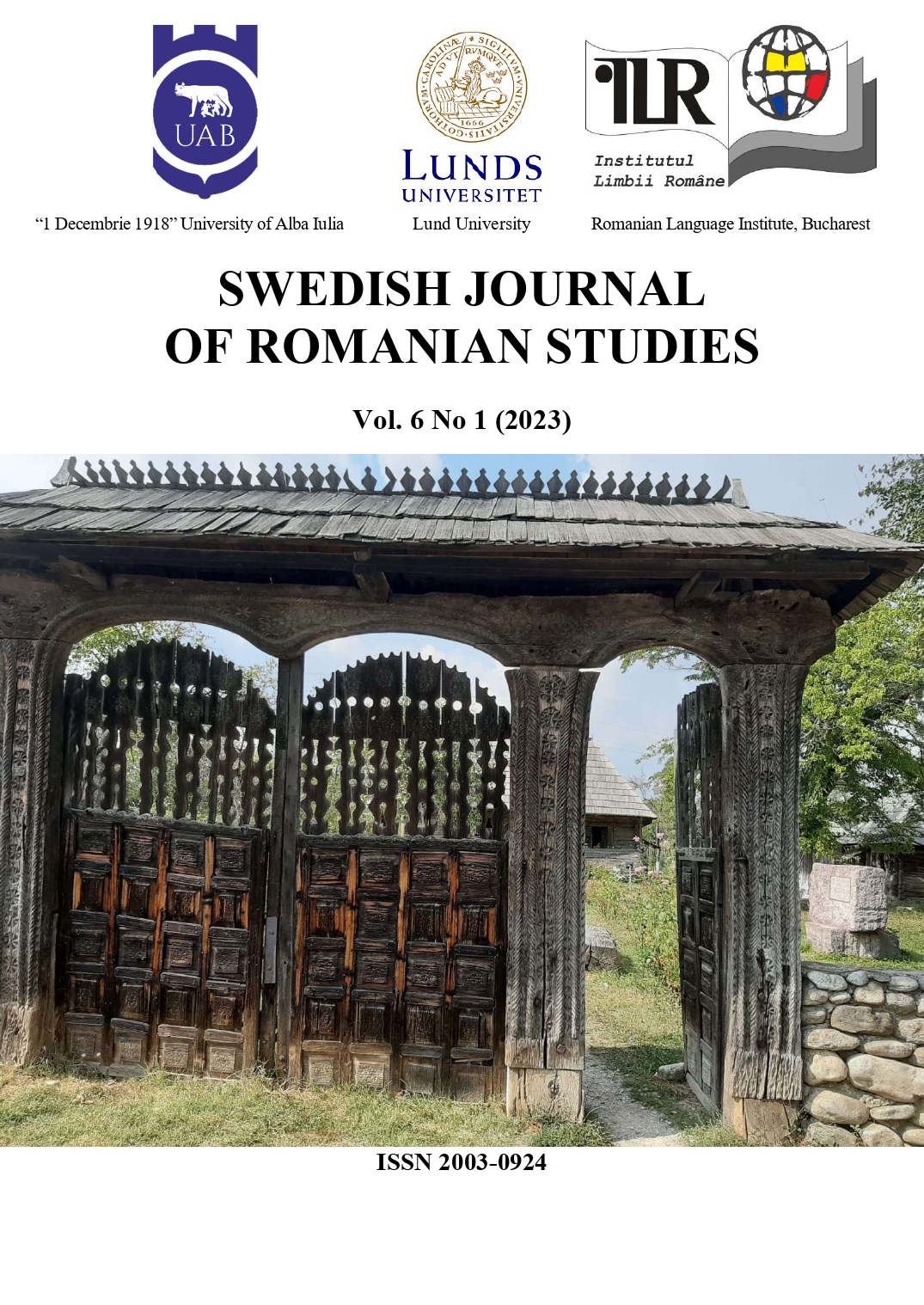Modelul gazetăresc al banditului social în romanul tâlhăresc al secolului al XIX-lea
The feuilleton model of the social bandit in the nineteenth-century outlaw novel
DOI:
https://doi.org/10.35824/sjrs.v6i1.24894Keywords:
Panait Macri, Ilie Ighel , outlaw novel , social banditry , historical novelAbstract
The popularity of the idea of social banditry is closely related to the socio-historical, economic and cultural context, and literature and history only record the reasons why the noble thief, in many variants the outlaw, become some of the central figures of the Romanian historical novel of the 19th century. The outlaw novel is detached from the literary body of the hajduk prose and proposes another series of motives for the actions of the main characters. Cruelty is no longer euphemized by the oversize of the noble character, and the passionate prowess, selfishness, and murder foreshadow the outlaw’s refuge in a society of outcasts, which opposes the official societal model. Through the character of the social outlaw, Panait Macri and Ilie Ighel propose another model of social bandit, the thief who, although initially occupying a privileged social position in the community to which he belongs, commits out of passion a gruesome crime, which will serve as an occasion for his exclusion from the community structure from which he claims. The social thief renounces the aura of vigilante or protector of the horned, and, yielding to the dark desires for the attainment of personal power and prosperity, becomes the embodiment of the evil to be feared, a hypostasis which does not make him repugnant in the collective imagination but, on the contrary, attractive.
References
Referințe primare:
Ighel, Ilie (1890). Banditul Simion Licinski/ The Bandit Simion Licinski. București: Tipogafia Dor. P. Cucu.
Ighel, I. (1892). Dragoș, hoțul Tecucilor/ Dragos, the thief of Tecuci. București: Cultura Românească.
Ighel, I. (1891). Moartea Banditului Simion Licinski/ Death of the Bandit Simion Licinski. București: Editura Librăriei H. Steinberg.
Macri, P. (1883). Ghiță Cătănuță, căpitan de haiduci/ Ghiță Cătănuță, captain of the hajduks. București: Editura Librăriei și Tipografiei H. Steinberg.
Referințe secundare:
Blok, A. (1972). The Peasant and the Brigand: Social Banditry Reconsidered. In Comparative Studies in Society and History. 494-502. Cambridge: Cambridge University Press
De Groot, J. (2010). The Historical Novel. London and New York: Routledge.
DLRO 1979: Dicţionarul literaturii române de la origini până la 1900/ Dictionary of Romanian Literature from the Origins to 1900, Gabriela Drăgoi, Alexandru Teodorescu, Florin Faifer et al. (coordonatori), Bucureşti, Editura Academiei Republicii Socialiste Romania.
Hobsbawm, E. (2017). Bandiții/ Bandits. (C. Șiulea, Trad.) Chișinău: Editura Cartier.
Ivanovici, S. (1898). Ilie Ighel, N.D. Popescu, Panait Macri. Activitatea și Influența lor moralizatoare/ Ilie Ighel, N.D. Popescu, Panait Macri. Their Works and Moralizing Influence. București: Lito-Tip. M. Tickes.
Moretti, Franco. (2013). Distant Reading. London: Verso.
Pavel, Toma. (2008). Gândirea romanului/ The Thinking Novel. București: Editura Humanitas.
Pillat, Dinu. (1947). Romanul de senzație în literatura română din a doua jumătate a secolului al XIX-lea/ The Sensational Novel in Romanian Literature of the Second Half of the 19th Century. București: Imprimeria „Talazul”.
Raabe, Juliette. (1970). Le Phénomène Série Noire/ The Phenomenon Black Series. In N. Arnaud, Entretiens sur la paralittérature/ Discussions on Paraliterature. (pp. 287-302). Paris: Plon.
Seal, G. (2009). The Robin Hood Principle: Folklore, History, and the Social Bandit. In Journal of Folklore Research (pp. 67-89). Bloomington: Indiana University Press.
Trout, Bernard. (1970). Économie Génétique de la Littérature Populaire/ Genetic Economics of Popular Literature. In N. Arnaud, Entretiens sur la Paralittérature/ Discussions on Paraliterature (pp. 345-353). Paris: Plon.
Downloads
Published
How to Cite
Issue
Section
License
Copyright (c) 2023 Olteanu Alexandra

This work is licensed under a Creative Commons Attribution-NonCommercial 4.0 International License.
Authors who publish with this journal agree to the following terms:
a. Authors retain copyright and grant the journal right of first publication with the work simultaneously licensed under a Creative Commons Attribution-NonCommercial 4.0 International License that allows others to share the work with an acknowledgement of the work's authorship and initial publication in this journal.
b. Authors are able to enter into separate, additional contractual arrangements for the non-exclusive distribution of the journal's published version of the work (e.g., post it to an institutional repository or publish it in a book), with an acknowledgement of its initial publication in this journal.
c. Authors are permitted and encouraged to post their work online (e.g., in institutional repositories or on their website) prior to and during the submission process, as it can lead to productive exchanges, as well as earlier and greater citation of published work (See The Effect of Open Access).

